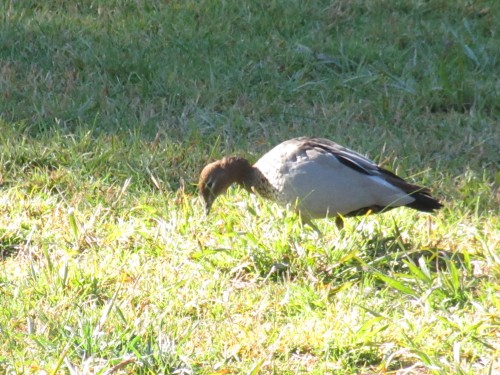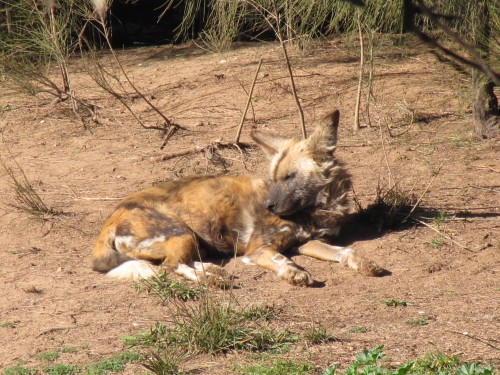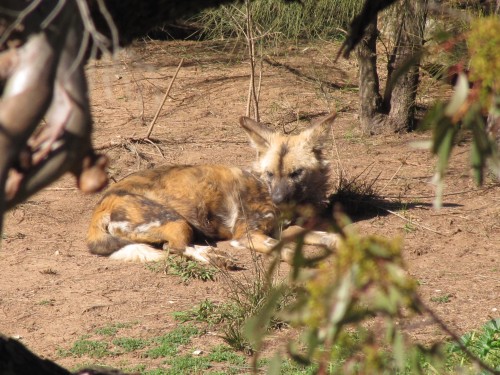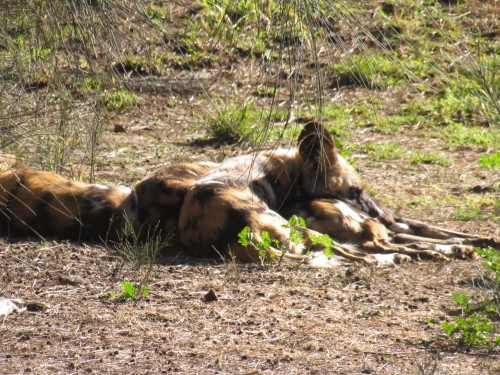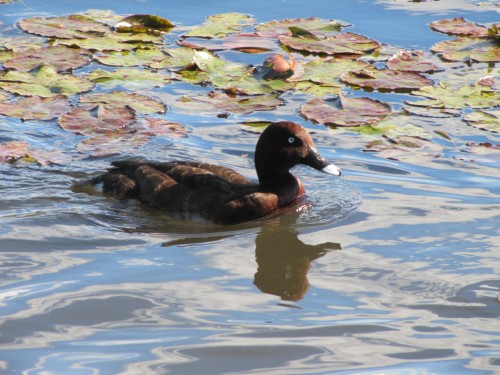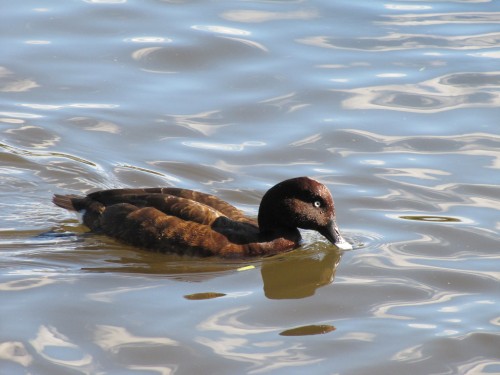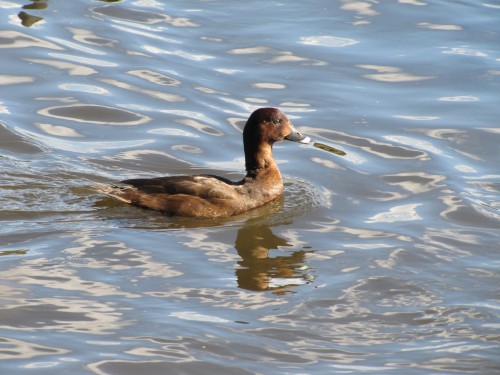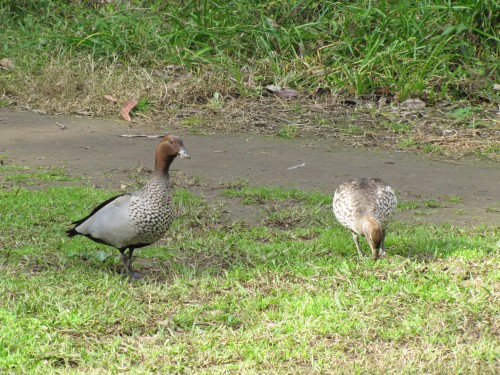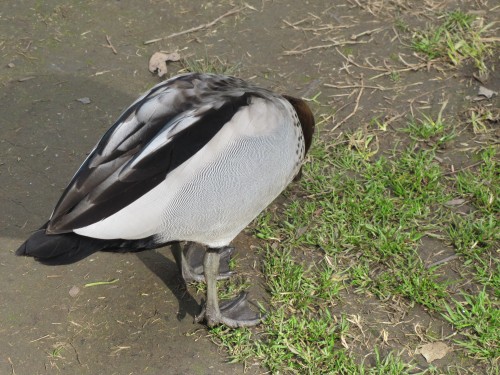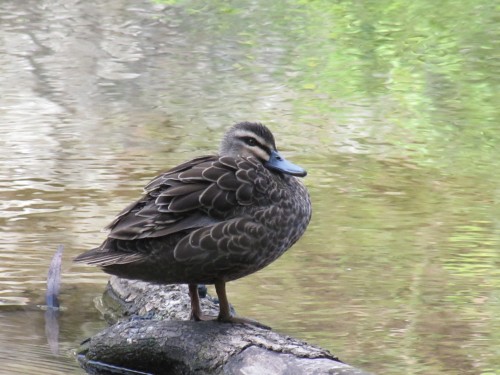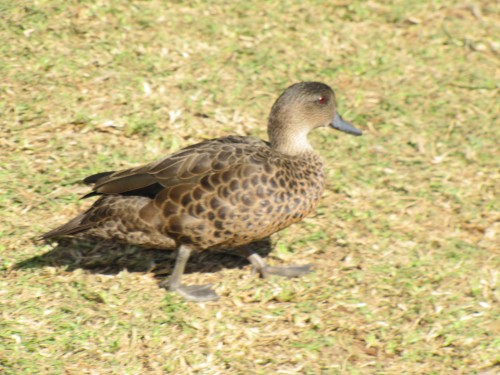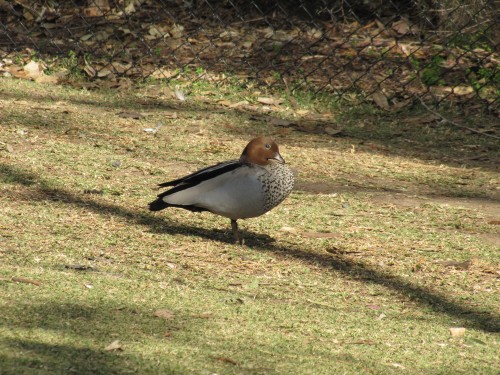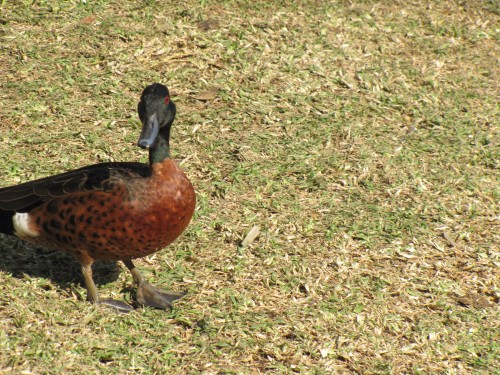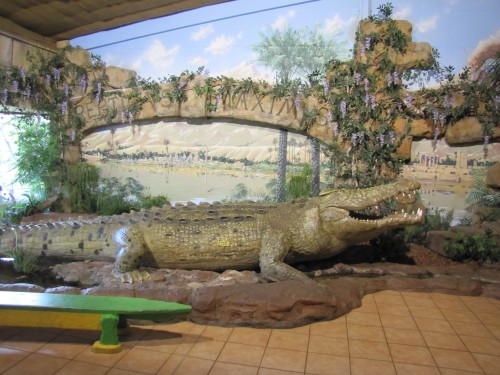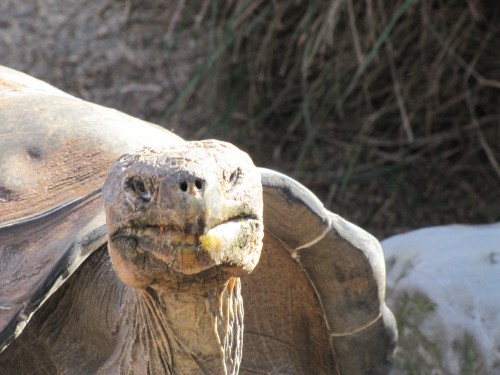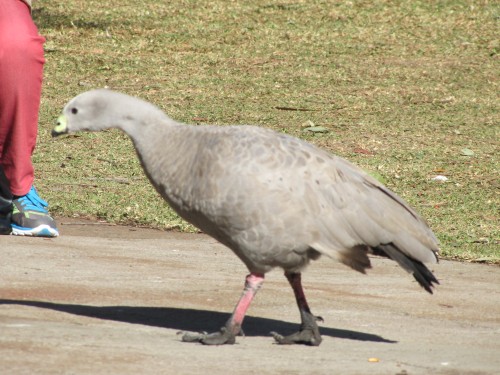Watch your back, duck
I was amazed at the danger this Australian Wood Duck had placed itself into. It was quietly grazing on the grass in the African Wild Dog enclosure at the Western Plains Zoo in Dubbo, and with its back to the pack sunning themselves about 30 metres away. They are cunning hunters and quite capable of sneaking up on an unsuspecting, tasty meal like a duck. I guess that they are well fed and have no need to chase after wildfowl, or any other birds which stray into their enclosure.
This reminded me of a guided tour we had a some years ago through our local Monarto Zoo, just 10km from my home here in Murray Bridge. The tour bus was slowly moving through the cheetah enclosure when the guide announced that the cheetahs loved running at full speed and catching the local ravens or magpies before they could get airborne again.
I decided then that I would never try to outrun a cheetah!
White-eyed Duck or Hardhead
There are two commonly accepted common names for this duck: Hardhead and White-eyed duck.
The second name is self explanatory and most appropriate. It always helps in the process of identification.
The name “Hardhead” is also commonly used, but its origins are far from obvious. The initial use of this name seems to come from the early days of settlement in Australia. According to one reference book (see below) it was the name given by early shooters. “While there is no evidence that its skull is particularly solid Frith (1967) commented that ‘owing to a very dense plumage and apparently great stamina, [it] is hard to kill.’ It presumably arose spontaneously” because it was already in use in 1898.
The photos on this post were taken of several ducks on one of the ponds in Centennial Park, Sydney, earlier this year. The last photo is of a female; note the lack of a white eye.
References:
Fraser, I and Gray, J 2013: Australian Bird names: a complete guide. CSIRO Publishing, Collingwood, Victoria.
Frith H J, 1967, Waterfowl in Australia. Angus and Robertson, Sydney.
Ducks in the Lane Cove National Park
The Lane Cove National Park in Sydney has the Lane Cove River flowing through it. Many areas near the banks of the river have been cleared of vegetation to accommodate ovals, picnic grounds and parking space for the many visitors who frequent the park daily. The water and the picnic areas naturally attract a range of ducks.
On our visit a few months ago I only recorded two species: Australian Wood Ducks and Pacific Black Ducks. The photo above shows the male on the left and the female on the right. The photo shows – in part – the big differences in the plumage between the male and female. The photo below shows some of the fine markings on the male bird.
Today’s last photo is of a Pacific Black Duck, one of our most common ducks.
Ducks at the Australian Reptile Park
On our recent visit to the Australian Reptile Park near Gosford north of Sydney, I was constantly on the lookout for birds that I could photograph. When most people were having lunch in the park picnic area – which was very nice, by the way – I noticed that there were quite a few ducks also present.
This is a familiar sight in Australia; where people gather to eat, many bird species, including ducks, tend to gather. Unfortunately many people also feed the birds, ignorant of the fact that human food is not only unsuitable for our native species, too much can also be deadly to the birds’ health.
Of the prominent ducks present, I photographed three species in the picnic area: Grey Teal, Chestnut Teal and Australian Wood Duck. Also present nearby were a few Pacific Black Ducks, but I decided not to photograph those as I have plenty of shots of that species already.
